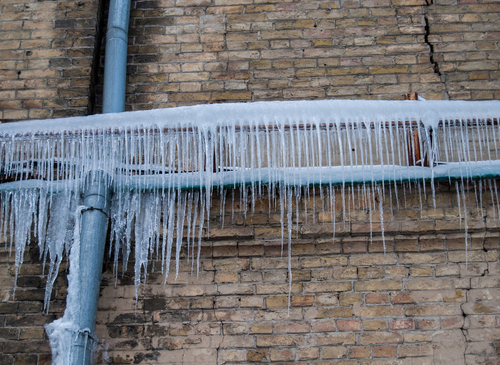Essential Strategies for Avoiding Frozen Pipes in Cold Weather
Essential Strategies for Avoiding Frozen Pipes in Cold Weather
Blog Article
What're your opinions about 6 Ways to Prevent Frozen Pipes?

Winter can ruin your pipes, especially by freezing pipes. Here's how to prevent it from occurring and what to do if it does.
Introduction
As temperature levels decrease, the danger of icy pipes increases, possibly causing costly repair work and water damages. Comprehending how to stop frozen pipelines is essential for home owners in chilly environments.
Recognizing Frozen Pipes
What creates pipelines to freeze?
Pipelines freeze when revealed to temperatures listed below 32 ° F (0 ° C) for extended periods. As water inside the pipelines ices up, it expands, taxing the pipeline walls and potentially triggering them to break.
Risks and damages
Frozen pipelines can bring about supply of water interruptions, property damage, and expensive repair work. Burst pipes can flood homes and trigger substantial architectural damage.
Indications of Frozen Pipeline
Determining frozen pipes early can stop them from breaking.
Just how to determine frozen pipes
Seek lowered water circulation from taps, uncommon odors or noises from pipes, and noticeable frost on subjected pipes.
Prevention Tips
Shielding at risk pipes
Wrap pipelines in insulation sleeves or utilize heat tape to safeguard them from freezing temperature levels. Focus on pipes in unheated or external areas of the home.
Heating strategies
Maintain interior spaces sufficiently heated up, especially areas with pipes. Open closet doors to allow cozy air to flow around pipes under sinks.
Securing Outdoor Pipes
Garden hoses and outside taps
Separate and drain garden hose pipes prior to winter months. Mount frost-proof spigots or cover outdoor faucets with insulated caps.
What to Do If Your Pipes Freeze
Immediate actions to take
If you think frozen pipes, keep faucets open to alleviate pressure as the ice melts. Use a hairdryer or towels taken in warm water to thaw pipelines slowly.
Long-Term Solutions
Structural changes
Take into consideration rerouting pipelines away from exterior walls or unheated areas. Include additional insulation to attics, cellars, and crawl spaces.
Upgrading insulation
Invest in high-quality insulation for pipelines, attics, and wall surfaces. Appropriate insulation helps keep regular temperatures and reduces the danger of frozen pipes.
Final thought
Protecting against icy pipelines calls for aggressive procedures and quick actions. By understanding the reasons, signs, and safety nets, homeowners can safeguard their pipes during cold weather.
5 Ways to Prevent Frozen Pipes
Drain Outdoor Faucets and Disconnect Hoses
First, close the shut-off valve that controls the flow of water in the pipe to your outdoor faucet. Then, head outside to disconnect and drain your hose and open the outdoor faucet to allow the water to completely drain out of the line. Turn off the faucet when done. Finally, head back to the shut-off valve and drain the remaining water inside the pipe into a bucket or container. Additionally, if you have a home irrigation system, you should consider hiring an expert to clear the system of water each year.
Insulate Pipes
One of the best and most cost-effective methods for preventing frozen water pipes is to wrap your pipes with insulation. This is especially important for areas in your home that aren’t exposed to heat, such as an attic. We suggest using foam sleeves, which can typically be found at your local hardware store.
Keep Heat Running at 65
Your pipes are located inside your walls, and the temperature there is much colder than the rest of the house. To prevent your pipes from freezing, The Insurance Information Institute suggests that you keep your home heated to at least 65 degrees, even when traveling. You may want to invest in smart devices that can keep an eye on the temperature in your home while you’re away.
Leave Water Dripping
Moving water — even a small trickle — can prevent ice from forming inside your pipes. When freezing temps are imminent, start a drip of water from all faucets that serve exposed pipes. Leaving a few faucets running will also help relieve pressure inside the pipes and help prevent a rupture if the water inside freezes.
Open Cupboard Doors
Warm your kitchen and bathroom pipes by opening cupboards and vanities. You should also leave your interior doors ajar to help warm air circulate evenly throughout your home.
.jpg)
We were made aware of that report about 6 Ways to Prevent Frozen Pipes through a good friend on our other web property. Are you aware of anybody else who is in to the topic? Do not hesitate to share it. I recognize the value of reading our article about How To Avoid Freezing Pipes.
Click Here Report this page